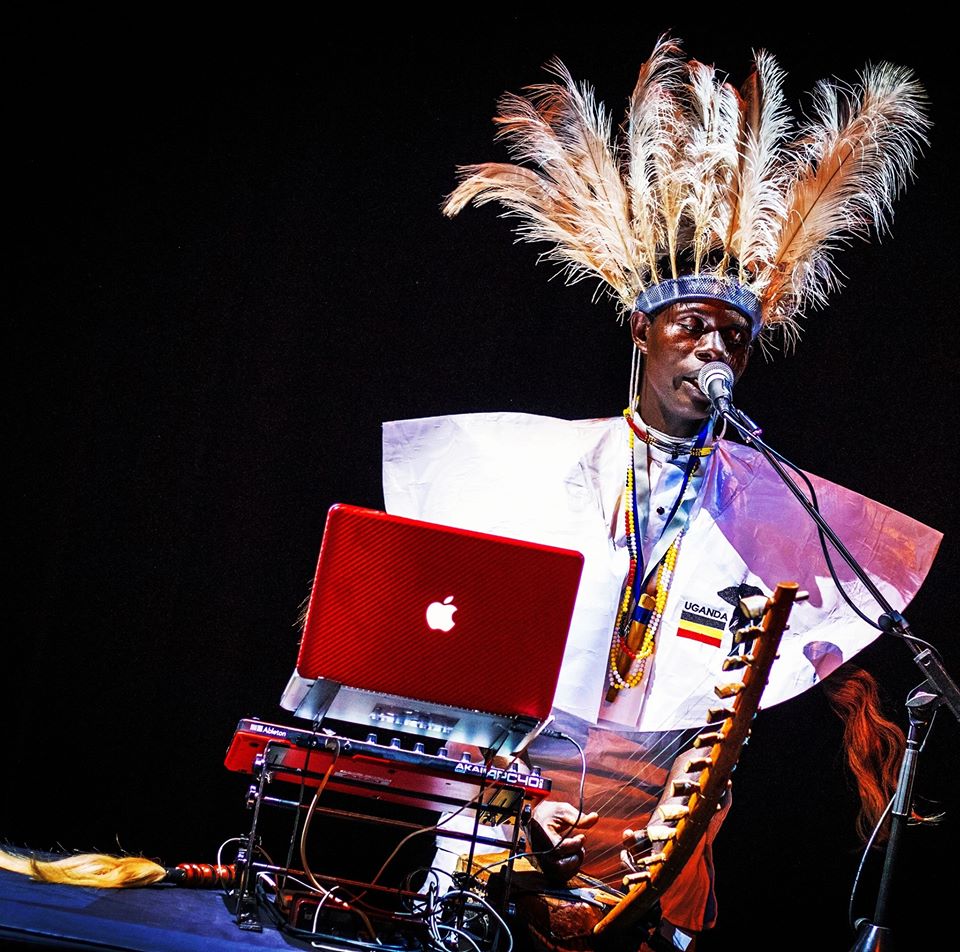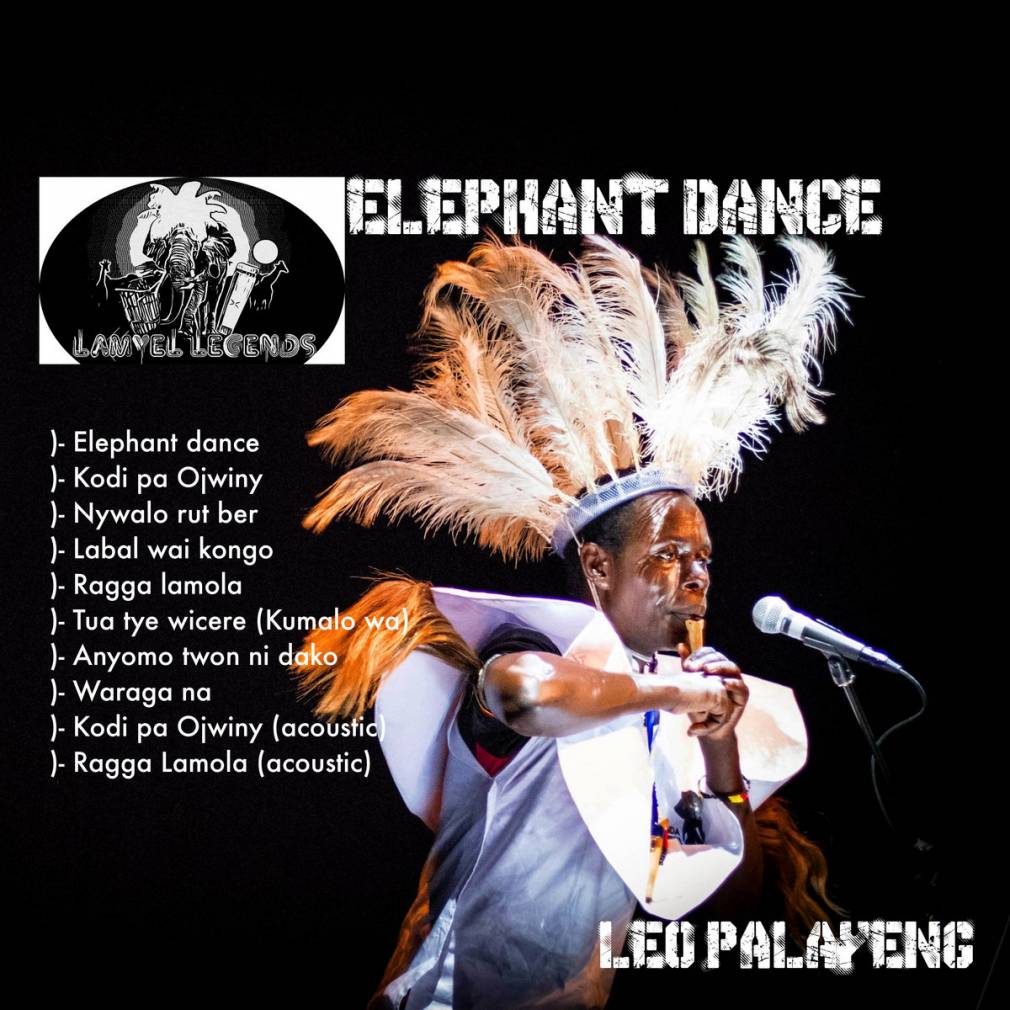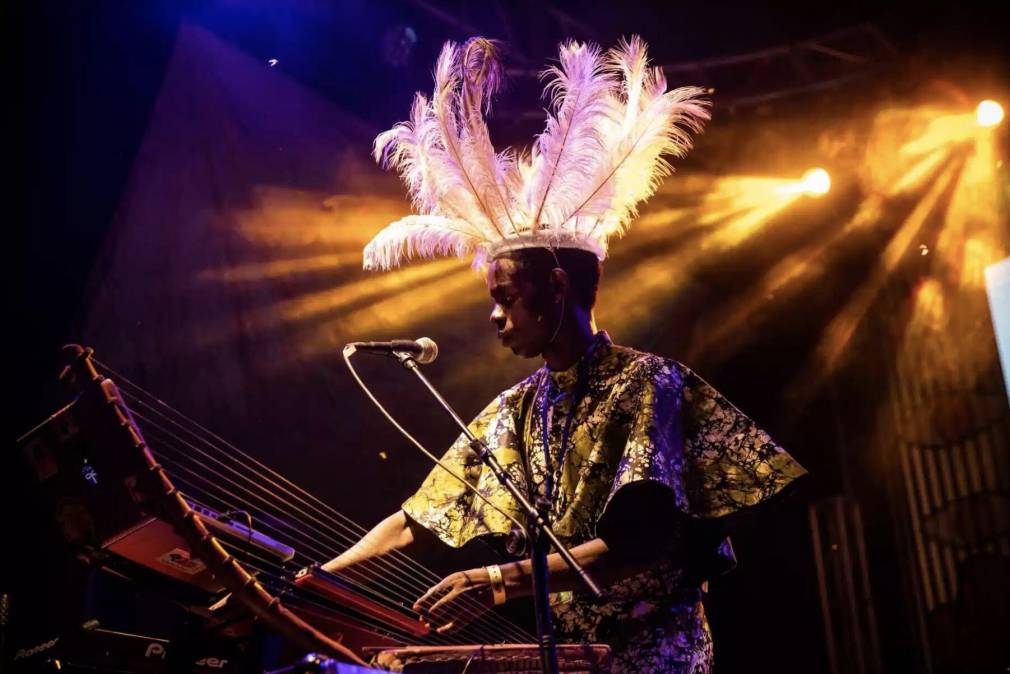Ugandan producer and musician Leo PaLayeng has been electrifying the music of the Acholi people for 20 years now. PAM sat down with one of the precursors of the Acholitronix movement about his new album Elephant Dance.
Nyege Nyege Tapes only recently revealed the acholitronix (or electro-acholi) genre internationally through the compilation Electro Acholi Kaboom from Northern Uganda and Otim Alpha’s album Gulu City Anthems, but the style is far from new. Since the early 2000s, producer and instrumentalist Leo PaLayeng has been producing and lending his studio to young artists to reinterpret Acholi traditional music with modern resources.
The Acholi people belong to the Luo group which extends from northern Uganda to Southern Sudan. Their music which is played and danced during celebrations, is known for its hypnotic sounds and sustained rhythms, punctuated by gourds, bells and strings. In the hands of these young producers, the traditional sounds have accelerated, sometimes reaching 200 beats per minute. Initially intended to replace the costly big Larakaraka bands at weddings, the frenetic music has now made its mark in the club scene.
Primarily a facilitator and curator, Leo PaLayeng has compiled ten songs of special importance on his new album, Elephant Dance. Interview.
You just released a compilation of your songs called Elephant Dance. What is this dance ?
It comes from the cultural background of the Nilotics, the Acholi people who migrated from the Nile. The Elephant dance is the symbol of the power of this animal. We dance with the energy, it is part of our identity, especially when it comes to Acholi dance. Each time I say the word « Elephant » in the song, it is easy for anyone to know where I come from. It is a very popular mean of calling the strength, the freedom and the joy to dance. If you listen carefully to the lyrics of « Elephant dance », you will hear some words that says « this dance is my identity and my culture is my dignity » so I do the Elephant Dance, I set myself free. Back home, people are like « I wish that the lockdown is not there and we can dance this song ». I help them to tell them who they are, who are the elephants. Our music is never silent, it is always there to say stand up, jump and shake !
We know that music is rooted in Ugandan traditions. What was the starting point of your musical career ?
Music has been a growth process for me. I played my first instruments when I lost my dad, I was about 6. It was during the funerals of my father, that’s when I started playing my first instrument called Nanga (also called african harp, editor’s note). I also grew up in an environment where communication has always been in music. The women are always singing during the housework, they celebrate the birth of a child or any other thing with songs.
You manufacture your own instruments ?
I grew up playing local instruments and I ended up innovating number of such instruments by improving them to be able to play different sounds from what our cultural people have been doing. I realized in school that people had formulas. School is a place for creativity and I used to disagree a lot with my music teachers because they wanted us to sing on major scale, and they didn’t know what to do with other pentatonic scales that come from our culture. So I ended up creating my instruments and walking away from what school was doing, while picking a few things from there to start my journey in music. As I grew, I met so many people who did music in their own way, that I had already some road map in my head to play the way I want. I listened a lot to people’s music and I couldn’t do something that someone is doing. Popularly, in my days of growth, people used to dance on music from the Caribbean or West Africa. Our people were having massive talent, but nobody knew about it. I believed that if people can create their genre, why not creating one that can help me identify myself.
For example in my tradition, the normal Nanga is only 7 strings and is pentatonic, and I created some with 14 strings. For me, creativity means bringing all the time something new on the stage. By creating that bigger instrument, it gave me the opportunity to expand the traditional music. In my culture, we have a strong link with art, and I am fulfilling some percent of it, by playing both acoustic and electronic.

You produced the Gulu City Anthems album for Otim Alpha. Do you share a particular story ?
From the traditional background, the acholi music grew up and people used to not appreciate it so much, until we started using the cultural patterns, for example the dances like Dingidingi, Larakaraka, Otole (war dance) or Bwola (royal dance). Whenever a musician comes to me and plays a certain kind of traditional music, I could feel where they belong. So when Otim Alpha came to me, I was really grateful, because I have always been working with musicians who just needed to use midi samples and Fruity Loops, in order to cheat and upgrade our instruments into that kind of software. In 2000, I ended up building a studio to do my own thing, with some fears, because people may not appreciate them. Later, I realized that Otim and me got the pattern to make the traditional beats and bring Larakaraka, which is just a normal dance everywhere, to become a style for weddings because it’s popular. Whenever people go to courtship dance, it gives the good celebration mood, and people dance with joy. We started to record and customize some songs. For instance, you can let me sing about your grandparents, and the family would own the song. People could hear their names in the songs and wanted more for the next celebration. The demand became so high, and we ended up sharing the loops among the producers and the musicians, we empowered them. I have always been a little bit underground, so the studio grew up to use music positively. We were empowering anyone with a sense of creativity, like buying software and giving them, lending my whole equipment to them, and we ended up creating a group of musicians.
With the birth of the acholitronix movement, how did you come across the Nyege Nyege Tapes crew ?
Those songs were going far beyond my region, and that’s how the Nyege Nyege people discovered Alpha and me. I produced Gulu City Anthems from 2007 to 2012. I did it with him because we met on all positive sides of energy. He held the talent to play adungu, I played nanga, some other instruments, and I own the studio so it was natural to collaborate. He was singing the choir of acholi folk songs, which is very rich. I am so grateful that these guys identified the talent that I am working with. Now he has the chance to record with other people, taking his musical patterns beyond his region, and that’s how it became global. This is electronic music with acholi patterns, that’s why we call it electro-acholi or acholitronix, and it has been there since 2000, since the first studio I set in my region, I made it happen. Every artist has a journey. Ours and Nyege Nyege one ended up having the same interest and that’s why they became so important in our international growth.

How do you feel knowing the genre has reached a global audience ?
From Gulu in northern Uganda, the songs went to East Africa, people could fly, people could reach the songs, they could watch our videos on YouTube. We were even aware that even if we didn’t push so hard, the reality is that a music which is unique and have a purpose, it will always find its way to the international community. I am always saying to people, don’t mind about the size of your audience, mind about the good things you make everyday, be creative, and make sure you look for new things to adapt. We are bringing more than the acholi music used in most of the celebrations like weddings, graduations, and cultural symbols of unity.
How did you select which tracks would appear on this new album ?
It took me a long time and it was a big choice for me to pick the songs, starting from 2014. After building up a studio, I was more a producer for other artists. I realized that there was so many musicians in my region who needed a purpose, and who wanted to make the region rich. I’ve always walked away from what people commonly do elsewhere. I didn’t want to copy anybody and I’ve decided to sing like us, like the Acholi and Luo people. That’s how the acholitronix genre became very strong because it is built on the story of my people. The lyrics talk a lot about the people, and the symbol of the elephant gives us that strength to believe in ourselves. This compilation is the best picked-up work starting from 2014, which made sense to me.
What other symbols are represented there ?
There are other symbols in this compilation, like « Kodi Pa Ojwiny ». It’s about the birds, and wherever they are, there’s always peace, joy and fun. When the woman start dancing, the way they wriggle is like a peaceful mean of saying that all that matters is to make the people around you feel the celebration. I used to write books and poems, but books will never make anyone jump, that’s why I wanted to put my lyrics in dance tunes. Regarding the lyrics, we also recorded songs for the environment et for people to have peace in their home. To have a healthy life, you need to have love, you don’t need to be violent. Some songs are variations on genders, between women and men. Sometimes it is vice-versa, women can also be very abusive to men ! There is also « Nywalo Rut Ber », it’s a cultural songs for people who are blessed with twins. It is the twin ritual dance of the Luo people. The lyrics of « Elephant Dance » are translated and available on my Bandcamp to help people understand the music.
Did you rework or remaster the songs before compiling them ?
Those songs were there in my backup, but I recorded them several times. When I traveled to Europe, I was improving all the mixes I had during some recording sessions. When I go to Denmark, I always work with my friend Emiliano Motta, who provides me mixing skills and equipment. We recorded a lot of stuff together, and sometimes we don’t even release the songs. I’ve been DJing in a lot of places, and I play my own creations to see how people can dance to that kind of songs. I started producing the album in Uganda, and continued in places like Belgium, France, Denmark, Mexico, Acapulco, I was always trying the best music for my live performances, trying to play songs that no one else had heard. I made this album with all my heart !
Even if the world only recently discovered this genre, how did you perceive its evolution since the beginning almost 20 years ago ?
When I look back in 2000 and sees what is happening now in 2020, I am very grateful to see what the cultural music we are doing brought. Alpha has been the most accessible, and also made all the tours in Europe with me. We still have a long way to go, we still have a lot of songs in store, and we will still release them for quite a long time. People should get ready to dance on more acholitronix songs !
This album has been released during a global pandemic. What would you like to say to other artists locked at home ?
There’s always ups and downs in life, but we are still together and we celebrate humanity. This crisis put us down but we are still up, because we keep ourselves together with our heart. The studio is still functional, making songs, and I believe that people should take this chance to use this isolation time to create and collaborate.
To listen to and purchase the album, go here.

